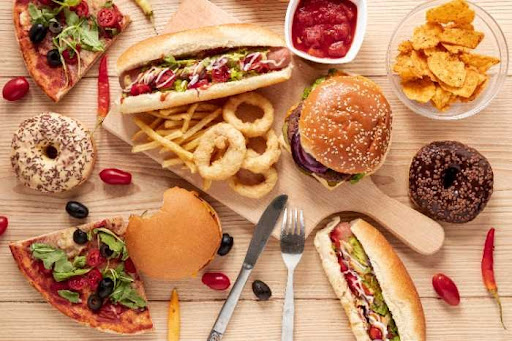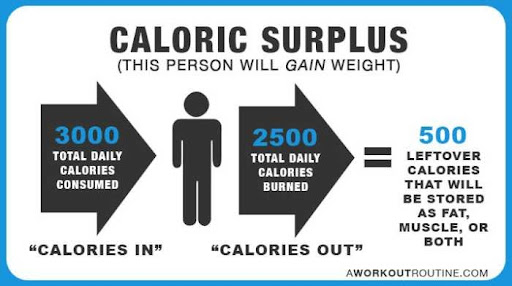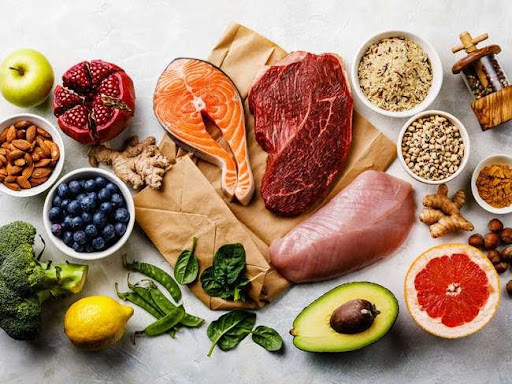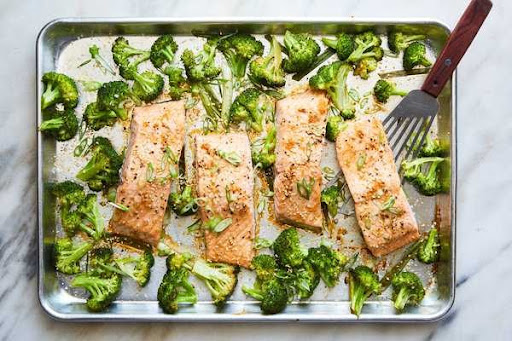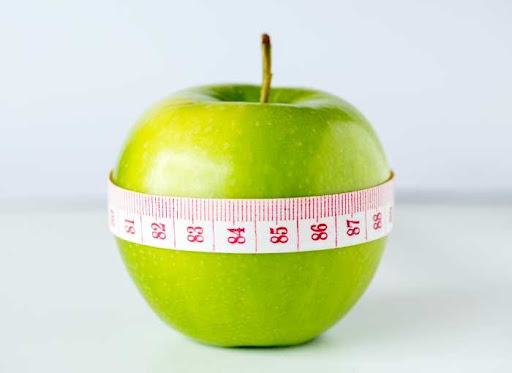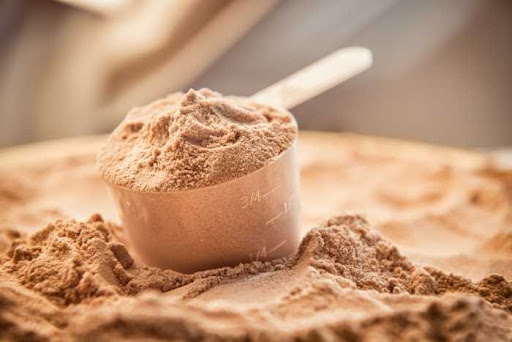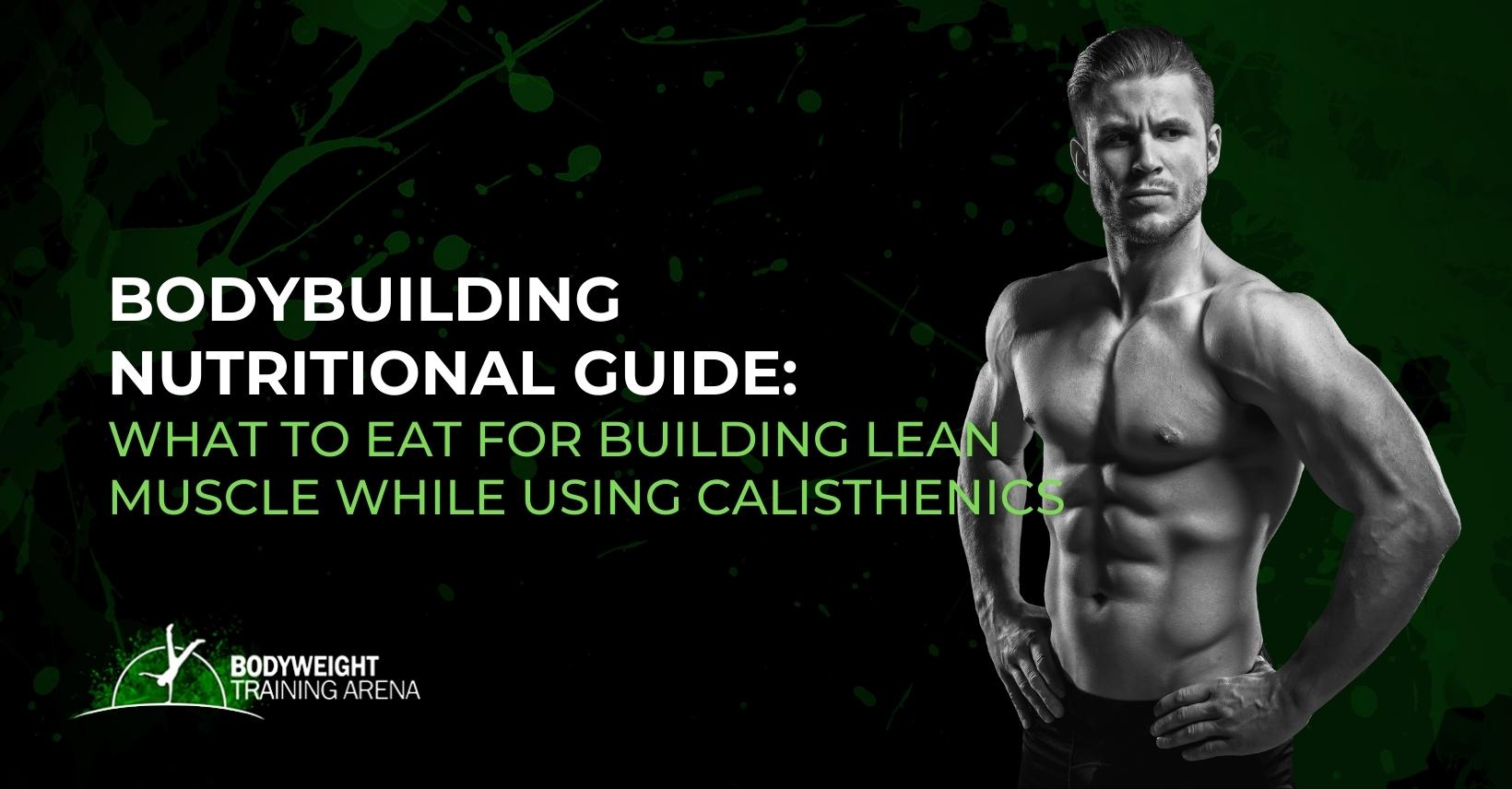
Join the tribe of Movement & Calisthenics Athlete – People just like you that are working with their own body weight to get strength, lose fat build muscle, recover from injuries and live their best lives!
Building lean muscle is a difficult and frustrating process for many people. The key to getting the results you want is by making sure that you are eating the right foods, with the right goals, in the right amounts.
Many people have a difficult time understanding what is the best way to combine diet and exercise (calisthenics or not) when they are trying to build lean muscle.
Research has shown that there are no one-size-fits-all solutions, but following a general guideline on how to properly approach nutrition will yield massive results to gain muscle and lean mass. If you have the means to get some guidance from your doctor or nutritionist, you can develop a plan that works for you, but not everyone has this capacity.
We will discuss how to maximize the effects of calisthenics by eating the right foods in order to gain muscle mass while staying healthy and energized!
In this article, we will go into detail about how to eat for building lean muscle while using calisthenics so that you can finally start seeing those gains!
Nutritional dictionary
Photo from Freepik
Before we get started with the nutritional guide, let’s cover first some of the terms that we will encounter on a regular basis. These terms aren’t new to you, but it’s best to brush up on the basics so everyone’s on the same page.
Calories
Calories are a form of measurement like what we have with meters or feet for distance and grams or pounds for weight.
These calories are the amount of energy stored in the food in which our bodies absorb upon consumption. Everything we eat has calories. The higher the calories a certain food has, the more energy it can provide.
Here’s a usual breakdown of how our bodies consume calories:
10 % For food processing including digestion, absorption, and how you’re body will be able to use the energy
20 % For physical activity from workout and any other movements like sitting, walking, fidgeting
70% For regular body functions like breathing, pumping of the heart, growing
Metabolism
You’ll notice that physical activity accounts for a relatively low amount of calories, while day-to-day involuntary functions of our body use more energy.
Here we introduce the basal metabolic rate (BMR) which is 80% (70%+10%) of our energy expenditure. It’s what keeps us alive. BMR differs from person to person but can be computed in a general sense through the age, weight, height, and sex of the individual. Add the physical activity then what you get is the Total Daily Energy Expenditure (TDEE).
Your TDEE is what you need to know so you can take a more calculated approach towards muscle development.
Calorie calculator to get an idea of the number of calories and macronutrients you need for your goals, for our current purpose: to build muscle.
Macronutrients and micronutrients
Protein
protein are chains of amino acids that supplement muscle building
Carbohydrates
Calorie-rich carbohydrates: Carbohydrates are your body’s main source of energy and fuel. They provide a sustained release of glucose throughout your day which helps keep you active and alert as well as replenish glycogen stores depleted from exercise – both important factors in building muscle through calisthenics workouts. Make sure to consume plenty of complex carbs to prevent muscle fatigue and sustain yourself in your workout.
Fats
healthy fats that omega 3 fatty acids improve heart health
International consensus suggests that individuals undergoing resistance training (which everyone should be doing) consume fats to take up 35% of daily energy requirement, with saturated fats not exceeding 10%
Goals to choose from
Fat loss
Losing fat doesn’t necessarily equate to weight loss. Fat loss is decreasing the amount of body fat so that the muscles can show. The goal is to maintain the muscle you gained from your training while maximizing the fat you lose.
Bulking
Here’s what you’re probably after with this article: maximizing your muscle-building potential through your food intake.
Consume extra calories with a high amount of protein to carve your path towards building muscle while gaining very little as much fat as possible. That’s lean muscle growth.
Just keep in mind that fat acquisition is inevitable when bulking.
Cutting
Cutting is usually done after a bulking phase. It’s essential for fat loss while maintaining the muscles you gained. Cutting is done so that the muscles you’ve built during your bulk can show even more.
Body recomposition
Body recomposition is an effective strategy in building muscle while losing fat at the same time. It’s basically lean muscle growth. This is done by implementing rigorous resistance training with a very slight caloric surplus. The result might manifest in a longer time frame, but still an option to go with since you eliminate the “fat acquisition” stage you get from bulking.
The secret to building muscle, losing fat, and staying lean
You might get annoyed with this, but to tell you the truth, there’s no secret.
Building muscle, losing fat, staying lean, is all about discipline. Everything is in moderation to keep it sustainable.
Following these guidelines below will help you maximize your muscle-building potential while minimizing fat build-up so you can build the best science-based diet for yourself.
5 Principles you need to follow for effective bodybuilding
Stick to whole foods
Not all food sources are created equal. It doesn’t mean that you need to pack up the calories is that you’re going to eat everything!
Choosing whole, unprocessed foods that don’t have too much unhealthy fat, sugar, sodium, and other processed baddies allows you to maximize caloric intake along with proper nutrition to power your growth potential.
Stick to your green vegetables, fruits, unprocessed lean red meat in your calorie intake.
Whole foods are highly satiating which leaves you feeling full and less prone to eating more. Especially when choosing your carbs, eating more slow-digesting foods provide longer-lasting energy to power you throughout your day and during your workout. There are various options from brown rice to potatoes (not fried nor chips), sweet potatoes. Limit your white processed grains such as white rice and white bread.
If you like pork, then choosing leaner allows you a good source of muscle-building protein while minimizing the high level of fats pork usually has. Pork tenderloin is a good option rather than choosing bacon for breakfast every day.
According to recent research, whole eggs are perfect protein providers plus they are very accessible and affordable. Cholesterol found in egg yolks is high which is why it’s generally recommended to stick to egg white instead.
Stick to unprocessed cheese such as cottage cheese, mascarpone, mozzarella for another delicious protein source.
For healthy fats, you can go with nuts, olive oil, avocados. Just keep in mind that these are packed with calories, so a little bit already goes a long way.
Takeaway:
Focus on unprocessed meats, fruits, vegetables, and grains for a low amount of calories with maximum nutrition.
Minimize the junk
You don’t have to eat like this every day, but you don’t also have to completely avoid them. Moderation is the key. Photo from Freepik
Junk here refers not only to chips, sodas, candy, and fries, it also covers all other high-calorie foods that add very minimal nutritional value such as burgers, pizzas, white-flour baked goods, sugary confections, and the likes.
Junk food is generally caloric dense meaning that eating, for example, a large burger and fries can already equate to the same amount of calories of healthy whole foods prepared FOR A WHOLE DAY.
The key here is moderation. You’re not necessarily cutting off everything. Deprivation will only lead you to a search for more. As they say, “Absence can make the heart (stomach) grow fonder.”
If you still find it difficult to minimize junk food in your diet, you can also consider looking for substitutes that offer flavor while not sacrificing the caloric count and nutritional value.
Below are excellent examples you can choose from that packs flavor and nutrition:
- Greek yogurt instead of Mayonnaise
- Cottage cheese instead of
- Nice cream instead of Ice creams
- Banana oatmeal pancakes instead of breakfast pancakes
- Fruits instead of candy
- Dark chocolate instead of regular milk chocolate
- Carbonated water or iced tea instead of sugary drinks
- Vegetable chips (there are really good brands) instead of regular potato chips
- Air-popped popcorn instead of regular popcorn
It might be a challenge to cut back, especially when you are hooked since these are packed with processed sugars, sodium, and fat, making them highly addictive.
The recommendation is to consume no more than 10% of calories from these delicious treats. The rest should come from the whole foods mentioned above: fruits, vegetables, lean protein sources, whole grains.
Keep it a minimal serving and not every course. Also, for alcohol, you might want to consider preparing it for special occasions instead.
Takeaway:
If you have to eat junk food and don’t like the alternatives, minimize the intake of empty calorie sources. You don’t have to cut it totally out of your life.
Meet YOUR caloric and nutritional requirement
Make sure you take in sufficient calories, but also take note of your nutritional intake. Photo from AWorkoutRoutine
Energy balance is an important factor to build muscle. If you’re planning on muscle gain, a caloric surplus is a must as mentioned above.
To build muscle, you need to take in calories more than what your body needs to sustain its current weight and composition. While there are so many variables affecting your metabolism and hypertrophy, a 2019 study by Slater et al., recommends a surplus of 350 – 500 calories per day. In addition, individualistic factors should also be considered, so it’s best to experiment with what will work for you. “Fast gainers” can opt for the lower end of the range to minimize fat development while “hard gainers” can choose the higher end to facilitate muscle building.
But research shows that you won’t benefit from excessive caloric intake due to the limit your muscles’ rate to grow. So anything that went overboard will be turned into fat instead of lean muscle.
Aside from the caloric surplus, it’s also essential to meet the minimum guidelines for the macronutrients and micronutrients. This is because the nutrients will also assist in muscle building and every other vital body function.
Vitamins assist in protein synthesis D, A, E B vitamins contribute to muscle growth and influence body function that affects muscle strength and size development.
Minerals such as magnesium, zinc, and iron, also play influential roles in muscle building.
HOWEVER, vitamins and minerals do not boost muscle development when taken in excess or used as supplementation. So unless you have any mineral or vitamin deficiencies, there’s no need to add them, hoping it can get you more muscle gain.
Eat your green leafy vegetables and fruits in good portions and regularly, then you will most likely satisfy the requirements of this department.
Takeaway:
Intake a caloric surplus of around 250 – 500 calories depending on your individual requirements while meeting the nutrients needed for healthy function. Get enough calories!
Focus on high protein
There are tons of options you can choose from for high-quality protein sources. Photo from Getty Images.
Like your source of calories, not all protein sources provide you with high-quality protein.
If you’re a meat-eater, focus on leaner sources such as chicken breasts. It has minimal fat but is packed with protein.
Lean beef is also a great option with high-quality protein, zinc, b vitamins, and high-iron content as well.
You can also include casein protein into your diet through dairy products. It’s a slow-digesting protein so you can feel fuller for a longer time. You can get it from products like milk, cottage cheese, greek yogurt.
You also have a great selection of fish such as tuna, and salmon, just to name the popular ones. These are excellent sources of protein while also providing a good amount of healthy fatty acids such as omega 3.
Vegetarians and vegans can opt for soy-based products which already have many options in the market. Soy, legumes, and beans are also good sources that have the amino acid leucine which initiates muscle repair.
However, there’s a threshold on how much protein you can get.
Clinical research suggests that exceeding the amount of the recommended protein range does not offer any additional muscular or strength gains and can be dangerous if kindy dysfunction persists.
There’s no complete protein package. It’s better to get it from different sources so you also keep your dining experience enjoyable. Here is a brief list of the possible sources:
Red meat: Lean beef, lean pork cuts, lamb
White meat: Chicken, turkey, duck
Fish: Mackarel, salmon, tuna, sardines,
Dairy: Milk, cottage cheese, yogurt
Vegan options: Soy, nuts, seeds
Takeaway:
Get protein around 1.6g to 2.2g per kg of bodyweight to facilitate optimal muscle growth and muscle repair.
Eat what you like
Baked broccoli and salmon from Cooking with NY Times.
There’s no point sticking to protein shakes and egg whites in the morning then the rest of your days are filled with chicken breast, broccoli, and brown rice to build lean muscle if you don’t enjoy it.
Not enjoying what you eat isn’t going to be sustainable and will only leave you miserable in the long run.
Experiment with what works for you that you enjoy.
Takeaway:
Keep the process of eating enjoyable and don’t treat it like a chore.
Sample muscle-building diet
Making changes for just one week with already results in good gains. Just keep in mind that building muscle takes time.
Here’s a sample of a meal plan for a day that provides complete protein requirements with slow-digesting carbohydrates to increase muscle strength, lean muscle growth, and development. You can easily make the necessary substitutes for your preference and requirement.
SAMPLE FOR MALE average of 2500 calories BMR
(from Built with Science)
DAILY RECOMMENDED CALORIES for bulking = 2750 calories
(protein 184g, carbs 367g, fat 68g)
Meal 1 – Protein smoothie
1 frozen banana
1 cup strawberries
1 cup oats
1 1/2 cups 1% milk
1 scoop protein whey
2tbsp peanut butter
1tbsp cinnamon
Total calories: 976 (64p/131c/28f)
Meal 2 – Baked chicken
4oz baked chicken
1 cup boiled lentils
1/2 baked zucchini
1 cup brown rice
Total calories: 535 (48p/80c/3f)
Snack
25g Nuts (Almonds)
Total calories: 145 (5p/5c/12f)
Meal 3 – Preworkout
2 whole eggs
1/2cup egg whites
handful spinach and mushroom
4 rice cakes
1 sliced banana
Total calories: 461 (32p/59c/12f)
Meal 4 – Postworkout
4oz baked salmon
12oz baked white sweet potato
Stir fry mixed veggies
Total calories: 630 (35p/92c/13f)
Bonus!!
Taking down notes during your earlier periods
Calorie counting isn’t always necessary. Photo from Freepik
While it’s not necessary, keeping track offers the most sensible and fastest approach to developing your muscles and building up your physique.
Usually, we don’t have the time and enough energy to sustain the effort of counting our calories. However, in the beginning, you can maintain this until you can get a general ballpark idea of the caloric and nutritional needs for you.
Once you’ve developed the habit, you can let your intuition guide your nutrition while sticking to the general guidelines of high protein, high fiber meals.
Staying hydrated
Photo from Unsplash
Drink plenty of water to avoid dehydration which slows down muscle repair. Plus drinking plenty of water makes you feel fuller and less hungry.
Supplementation
Whey protein powders are an amazing source of high-quality protein while staying delicious and lower caloric.
Have you noticed those brown liquids weightlifters drink through their shakers post-workout?
It’s probably a protein shake. It’s a mixture of water or milk along with a high-quality protein powder that’s packed with all the essential amino acids.
Whey protein that has branched-chain amino acids that builds muscle helps decrease muscle fatigue and soreness. Good protein powders are almost as good as pure protein since it’s low in calorie and fat.
Omega 3 fatty acids can also be a good option as research supports to assist in optimal muscle growth and to improve body functions
Other than that, other supplementation should depend on the deficiency you have.
Staying consistent & sustainable
As mentioned before, keep it enjoyable. Nutrition shouldn’t be torture on your quest for a strong, powerful, muscular, and capable body.
High-quality sleep
Research shows that lack of sleep not only affects regular body function, but also hinders muscle growth, increases your appetite, and slows down your metabolism.
The people who made the saying, “sleep is for the weak”, are probably not building any muscle.
Regular workout
To build muscle, you need to get the proper stimulation from resistance training. Calisthenics offers an amazing approach to muscle-building while being accessible and challenging for everybody; beginner to advanced, young to the old, male, female, everyone.
For more help on musclebuilding with calisthenics, check out the article below:
To sum up
Whether you’re building up muscle, trying to lose weight, or just improving overall health, diet plays a massive role.
Food is an energy for our body but also good for our soul. Finding the right balance to sustain your body’s ability to repair and increase muscle strength and size while minimizing fat and keeping it enjoyable is vital to building muscle properly with calisthenics or any other resistance training.
While diet plays an important role, you will only get strength gains if partnered with proper muscle-building protocols.
Cookiecutter or one-size-fits-all workouts that you usually get from any other “fitness experts” will actually do more harm than good in your quest for a muscular physique.
Choose the personalized approach of building muscle by first understanding what your body is capable of. Knowing what you can do, allows a personalized program to be catered towards you.
TAKE THE ASSESSMENT NOW!
Smarter decisions for better gains.


